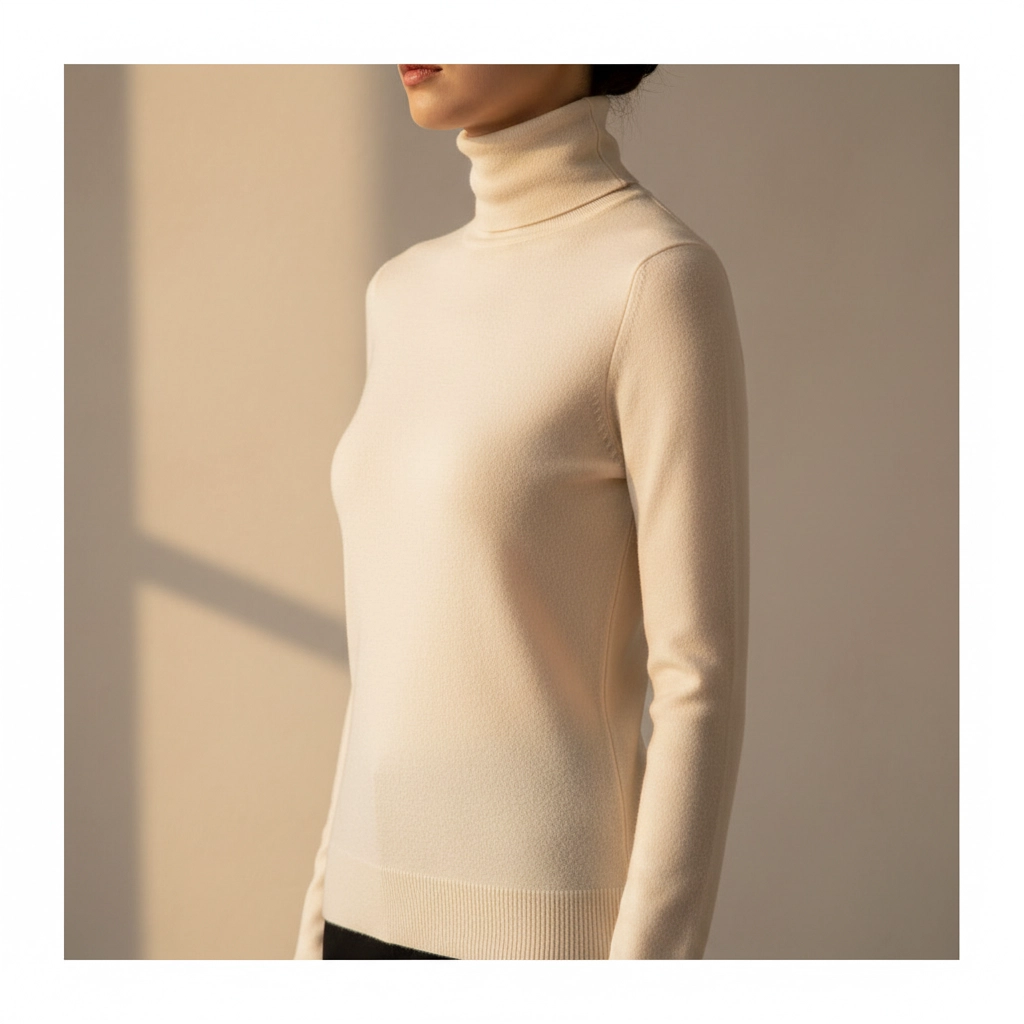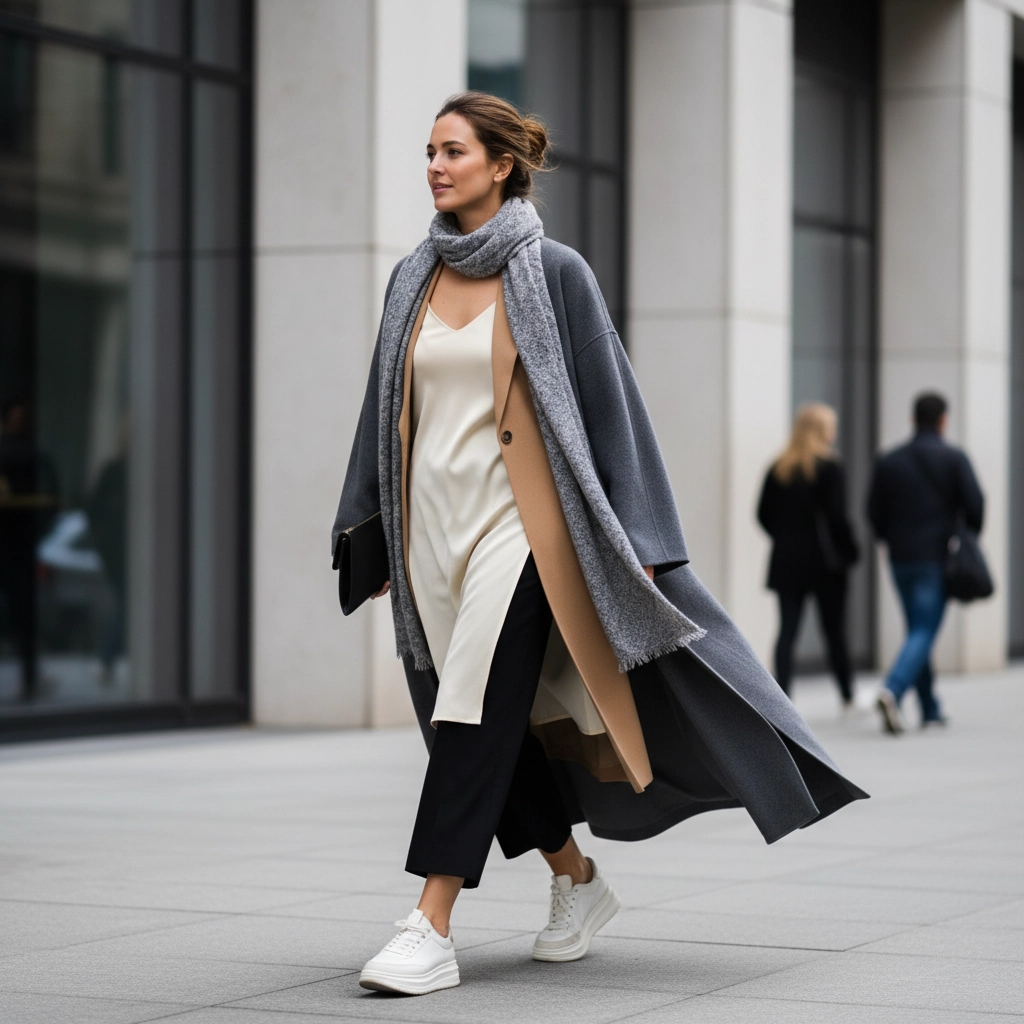Let's be real – most of us don't have an hour to spend crafting the perfect layered outfit every morning. Between hitting snooze three times and rushing to grab coffee, getting dressed often feels like a game of fashion roulette. But here's the thing: mastering fall 2025's hottest layering trend doesn't require a closet overhaul or a styling degree. It just needs a few smart strategies that work even when you're running on fumes and running late.
The secret isn't about having more clothes – it's about understanding how the right pieces work together. This fall, layering is all about creating effortless sophistication that looks intentional, not like you grabbed everything within arm's reach of your bed.
The Foundation Rule That Changes Everything
The most successful layering starts with what fashion insiders call the "Russian doll rule." Think of those nested wooden dolls – each one fits perfectly inside the next, getting progressively larger. Your outfit should work the same way: slim base layer, relaxed middle layer, structured outer layer.
Your foundation piece should hug your body without adding bulk. This means fitted turtlenecks, sleek long-sleeve tees, or silk blouses that create a smooth silhouette. These base layers are your best friends because they provide warmth and coverage without compromising the clean lines of everything you'll layer on top.
A classic white tee or fitted turtleneck can anchor dozens of different looks. The key is choosing pieces in fabrics that won't bunch, roll, or create uncomfortable pressure points when you add more layers.

The Three-Layer System That Actually Works
Every successful layered outfit follows a simple three-part formula, and each layer needs to earn its place. Before adding any piece, ask yourself: "What job is this doing?" If it's not providing structure, adding texture, or creating visual interest, it's just adding bulk.
Layer One: The Foundation
This is your base – think fitted basics that create a smooth foundation. A bamboo twist front top works beautifully here because bamboo fabric is naturally temperature-regulating and won't add unnecessary bulk under other layers.
Layer Two: The Interest Creator
Your middle layer adds texture, color, or sophistication. This could be a cardigan, blazer, or pullover sweater. The key is choosing pieces that have some structure but aren't too fitted. This layer often becomes your style statement piece.
Layer Three: The Anchor
Your outer layer provides the final structure and often the most dramatic element. Coats, jackets, or structured wraps fall into this category. This layer should be the loosest fit to accommodate everything underneath without looking bulky.
Five-Minute Morning Formulas
The Professional Power Play
Start with a fitted turtleneck, add a tailored blazer, and finish with a wool coat. This combination works from boardroom to coffee shop and takes less than two minutes to put together. The progression from fitted to tailored to structured creates an effortlessly polished look that photographs beautifully and feels comfortable all day.
The Casual Sophisticate
Layer a crew neck sweater over a contrasting tee, letting the bottom layer peek out at the hem and neckline. Top with a leather jacket or denim jacket for instant cool-factor. This combination works with jeans, skirts, or even over a knit tube dress with scarf for unexpected sophistication.
The Textural Goddess
Mix a silk blouse with a chunky knit cardigan and finish with a structured coat in a different texture entirely. The contrast between smooth silk, cozy knit, and crisp outerwear creates visual richness that looks expensive and intentional.

The Texture Secret Fashion Editors Won't Tell You
Here's what separates amateur layering from editorial-worthy outfits: texture contrast. If every layer uses similar fabrics, your outfit falls flat and looks one-dimensional. The magic happens when you combine different textures strategically.
Smooth silk against chunky wool, crisp cotton under soft cashmere, structured denim over flowing fabrics – these combinations create visual interest that elevates even basic pieces. When you're getting dressed quickly, think: "Am I mixing at least two different textures?"
Don't forget about accessories in your texture mixing. A Matilde shoulder bag in leather or suede adds another texture dimension that ties your whole look together without requiring additional thought.
Shopping Strategies for Effortless Layering
The biggest layering mistake? Buying pieces that only work alone. When building a layering wardrobe, shop with combination potential in mind. That beautiful sweater needs to look good both by itself and under your favorite jacket.
Consider sizing up slightly on pieces you plan to layer frequently. A blazer one size bigger than usual fits comfortably over sweaters and cardigans without pulling or creating unflattering bulk. Think of this as controlled expansion – you want room to move and breathe, but not so much that you look like you're drowning in fabric.
Invest in transition pieces that work across seasons. A lightweight cardigan or kimono-style jacket bridges the gap between summer and winter, working over everything from sundresses to heavy knits as temperatures change.

The Color Coordination Cheat Sheet
Fall 2025 layering isn't about matching everything perfectly – it's about creating harmony through strategic color relationships. The easiest approach is building around one neutral base color and adding two accent colors maximum.
Start with classics: cream, beige, navy, or charcoal as your base. Then add one warm tone (rust, burgundy, mustard) and one cool tone (forest green, deep purple, steel blue). This formula works whether you're layering three pieces or five, and it looks intentional every time.
Monochromatic layering – using different shades of the same color family – creates sophisticated depth without requiring color theory knowledge. Think cream turtleneck, camel sweater, and brown leather jacket for an effortlessly chic combination.
Proportion Magic for Every Body Type
Successful layering is less about hiding and more about creating balanced proportions. The key is varying the lengths of your layers to create visual interest and flattering lines.
If your base layer is cropped, your middle layer should be longer. If you're wearing a long cardigan, balance it with a shorter top layer or let a longer base layer peek out underneath. These length variations prevent the dreaded "shapeless blob" effect that happens when every layer ends at the same point.
For petite frames, keep proportions closer to your natural silhouette and avoid overwhelming your frame with too many layers. Tall figures can handle more dramatic length variations and fuller silhouettes in their layering combinations.

The Night-Before Game Changer
The real secret to five-minute morning layering? Do the thinking the night before. Spend two minutes before bed selecting three pieces that follow your layering formula. Hang them together or lay them out in order.
Consider the weather, your schedule, and any special requirements for your day. Will you be in and out of buildings with different temperatures? Meeting important people? Need to look put-together for photos? Factor these elements into your layering choices when your brain is still functioning at full capacity.
Create "layering pods" in your closet – combinations of three to four pieces that work together beautifully. When you find a winning combination, take a photo and save it in your phone for future reference. This eliminates decision fatigue on rushed mornings.
Accessories That Elevate Everything
The finishing touch that transforms good layering into great style? Strategic accessories. A statement necklace over a simple turtleneck, a silk scarf tucked into a blazer, or droplet stone earrings that catch the light – these details make your layered look feel complete and considered.
Keep accessories simple when you're wearing multiple clothing layers. The goal is adding one point of visual interest, not competing with your carefully constructed outfit. A single stunning piece often works better than multiple smaller accessories.
Making It Work in Real Life
The best layering system is one you'll actually use. Start with combinations that feel comfortable and natural to you, then gradually experiment with more adventurous mixtures as you build confidence.
Remember that mastering layering is about developing your personal formula, not copying someone else's style exactly. Pay attention to which combinations make you feel confident and put-together, then build on those successes.
Most importantly, give yourself permission to experiment. Some combinations won't work, and that's completely normal. The goal is building a repertoire of go-to layering formulas that work with your lifestyle, schedule, and personal style.
With these strategies in your arsenal, those chaotic morning wardrobe moments transform into confident, five-minute styling sessions that set the tone for a great day. Your layers will look intentional, feel comfortable, and photograph beautifully – even when you put them together half-asleep.


